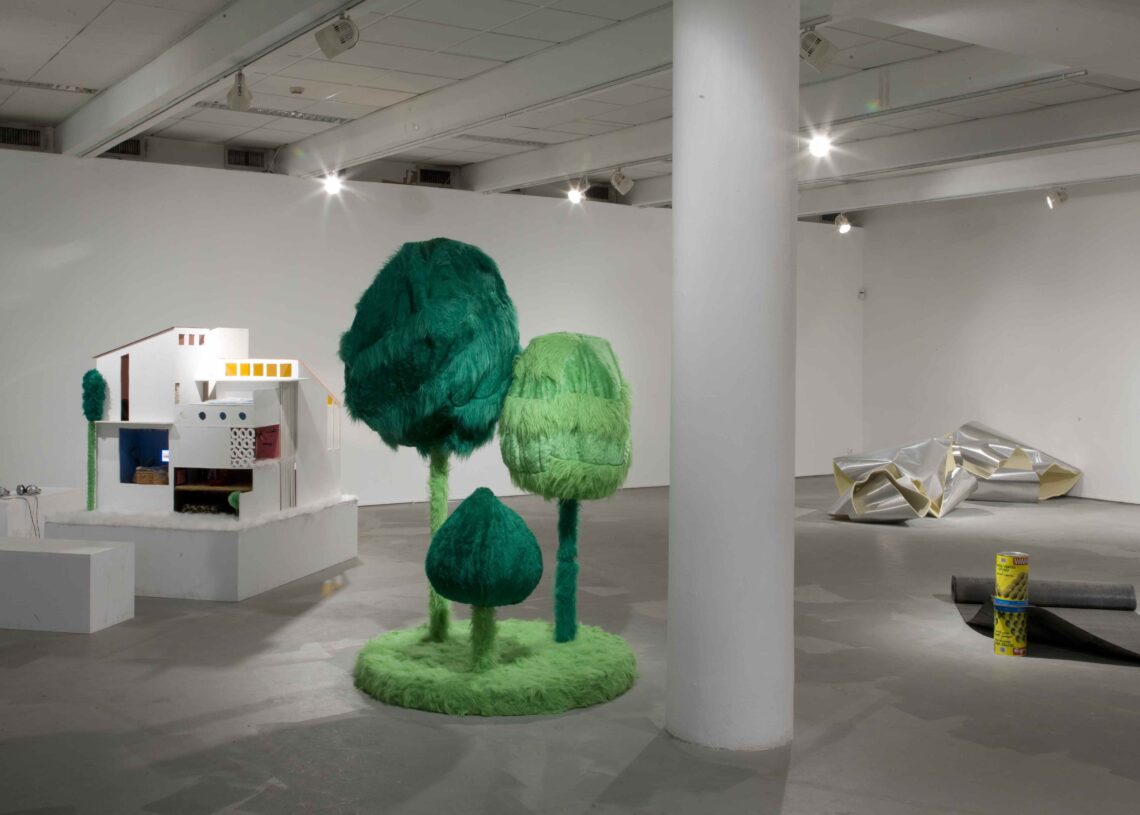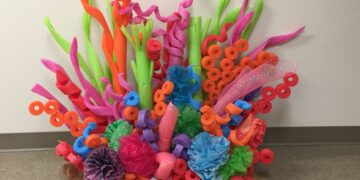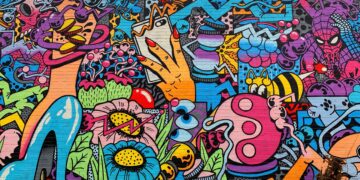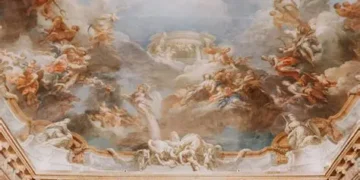Immersive Art: Redefining the Viewer Experience
Installation and performance art have dramatically reshaped contemporary artistic expression. These forms break free from traditional constraints, providing viewers with deeply engaging, often ephemeral, experiences. The allure lies in their ability to transform spaces and spark dialogue.
Installation art excels at turning ordinary spaces into captivating environments. By actively engaging the senses, viewers transition from passive observers to active participants. This active involvement fosters a stronger emotional connection and creates memorable encounters.
Performance art utilizes the artist’s physical presence and actions to communicate ideas, frequently igniting conversations around pressing social and political issues. These live events, often unpredictable and always thought-provoking, challenge established norms and encourage critical thinking. The fleeting nature of performance adds to its unique appeal, making each event a singular experience.
While the art market has seen some adjustments, the enthusiasm for contemporary art remains robust. A particular segment, encompassing many installation and performance pieces, has undergone a notable shift. Auction sales have experienced a downturn, yet transaction volumes have risen, suggesting continued interest, especially among a new wave of collectors. This suggests a shift in tastes, signaling a dynamic future for contemporary art.
Technology is also instrumental in expanding the horizons of installation and performance art. Digital projections, interactive displays, and virtual reality are opening up new dimensions of artistic expression. Artists are embracing these tools to push boundaries and explore uncharted creative territories.
Ultimately, installation and performance art represent a significant departure from traditional mediums like painting and sculpture. They challenge long-held conventions and invite viewers to reconsider their understanding of art. This spirit of experimentation and innovation is central to the contemporary art movement.
The Digital Canvas: Technology’s Influence on Art
Technology is revolutionizing contemporary art, reshaping creative processes and market dynamics. This evolution extends beyond traditional mediums, offering new avenues for artistic expression and audience engagement.
Digitalization is democratizing access to contemporary art, connecting a wider audience with diverse artistic creations. Online platforms are pivotal in this expansion, making art more globally accessible and challenging conventional sales models. This shift broadens the collector base and fosters a more inclusive art world.
Artists are increasingly embracing technologies such as AI, immersive media, and digital fabrication, pushing the boundaries of artistic expression. This integration leads to novel art forms and blurs the lines between different media, enriching the contemporary art landscape with innovative creations.
The digital marketplace and private sales are emerging as key drivers of growth in the art market, even amidst a slowdown in traditional auction sales. Collectors are showing a growing preference for the flexibility and discretion offered by digital platforms, signaling a significant change in how art is transacted and valued.
Artists and institutions face challenges related to material costs, tariffs, and the conservation of new media artworks. Overcoming these hurdles requires ongoing adaptation and experimentation, fostering resilience and innovation within the contemporary art community. This period of rapid change underscores the dynamic nature of the field.
Conceptual Art: Where Ideas Take Center Stage
Conceptual art challenges our very definition of art, prioritizing ideas and concepts over traditional aesthetics. This movement continues to provoke thought and redefine artistic boundaries, inviting us to reconsider what art can truly be.
At its core, conceptual art prioritizes the concept or idea behind a work, often de-emphasizing the physical object itself. The idea is the art. This approach challenges traditional notions of artistic skill and beauty, placing greater importance on the artist’s thinking and the viewer’s interpretation. It encourages a deeper engagement with the artwork.
The contemporary art scene, including conceptual art, is experiencing shifts. While overall art sales have seen some decline, interest in new and emerging artists is growing, especially among younger collectors. This suggests a dynamic market where fresh ideas and perspectives are increasingly valued. Collectors are keen to discover the next generation of groundbreaking conceptual artists.
Younger generations, like Gen Z, are actively collecting works by new and emerging artists. High-net-worth individuals are also allocating a significant portion of their art spending to these creators. This trend indicates a move towards supporting innovative and thought-provoking art, aligning with the core principles of conceptual art. This shift is expected to accelerate further as generational wealth transfers occur.
Galleries are responding to broader economic influences by becoming more selective and focusing on both established names and nurturing new talent. This adaptation reflects the need for sustainable growth models in the art world, encouraging innovation and attracting new audiences to conceptual art and other contemporary forms. The focus is on resilience and long-term value.
The conceptual art landscape is constantly evolving, challenging our perceptions and pushing the boundaries of artistic expression. It encourages viewers to think critically about the meaning and purpose of art, fostering a deeper appreciation for the power of ideas. This ongoing dialogue ensures that conceptual art remains a vital and relevant force in the contemporary art world.
The Collector’s Eye: Shaping the Art World’s Future
The art world is in constant flux, and the tastes of art collectors are a major force in shaping its direction. Understanding their preferences is key to spotting emerging trends and appreciating the rise of new artistic talent.
A significant shift is underway, driven by a new generation of collectors. These individuals, typically aged 25 to 40, are entering the market with considerable financial resources, largely due to intergenerational wealth transfer. This influx of younger collectors is reshaping traditional norms and priorities within the art world.
Beyond financial investment, these collectors are driven by values such as meaningful engagement, experience-driven collecting, social responsibility, and a desire for transparency regarding artist support and sustainability. They actively seek connections with artists and prioritize art that aligns with their personal beliefs.
These new collectors are highly engaged with digital channels for both acquiring art and connecting directly with artists. This has pushed traditional galleries to adapt by increasing their online presence and utilizing private sales mechanisms to cater to this tech-savvy demographic.
Art Fairs: A Meeting Place for Vision and Value
Art fairs remain a vibrant and essential part of the contemporary art scene. They are dynamic spaces where artists, galleries, and collectors connect, fostering the evolution of art and shaping its future.
Art fairs are still a popular destination for collectors. Surveys show a consistent interest in attending these events. A significant percentage of collectors plan to attend multiple art fairs, demonstrating a sustained engagement with the art world through these venues.
The primary draw for many attendees is the opportunity to discover new artists. Art fairs serve as a platform for emerging talents to gain exposure and for collectors to find fresh, innovative works. This quest for discovery fuels the energy within the fair halls.
Beyond discovering new artists, art fairs provide direct access to artworks and opportunities to meet galleries. Collectors value the chance to see art in person and build relationships with galleries. These interactions are key to the art market ecosystem. The following table shows the motivation of collectors attending art fairs:
| Category | 2023 Value | 2024 Value |
|---|---|---|
| % of collectors attending 2–5 art fairs | 69% | 67% |
| % attending at least one in-person art fair | 62% | – |
| Motivation: discover new artists | – | 71% |
| Motivation: access to artworks | – | 51% |
| Motivation: meet new galleries | – | 25% |
| Motivation: connect with existing galleries | – | 21% |
| Motivation: travel | – | 6% |
Data source: Artsy “Art Collector Insights 2024” (via survey of 2,154 collectors, majority U.S.-based)
Art fairs are more than just marketplaces; they’re cultural hubs where visionary artists, galleries, and collectors converge. This dynamic environment fosters both cultural exchange and market activity, contributing to the ongoing vitality of contemporary art.
Q&A
Question 1: How have installation and performance art redefined the contemporary art landscape?
Answer: Installation and performance art offer immersive and ephemeral experiences, challenging traditional notions of art. Installation art transforms spaces into interactive environments, engaging viewers on a sensory level. Performance art uses the artist’s body and actions to convey meaning, often sparking dialogue on social and political issues. Both forms enhance emotional connection and encourage critical reflection, moving beyond passive observation.
Question 2: What role does technology play in the evolution of contemporary art?
Answer: Technology is revolutionizing contemporary art by expanding creative possibilities and market interactions. Digitalization democratizes access through online platforms, while artists integrate AI, immersive media, and digital fabrication to create innovative art forms. This technological integration blurs the lines between different media and enriches the contemporary art landscape, though it also presents challenges in material costs, tariffs, and artwork conservation.
Question 3: What are the key characteristics of conceptual art and its impact on the art market?
Answer: Conceptual art prioritizes the idea over the physical object, challenging traditional notions of artistic skill and beauty. It emphasizes the viewer’s interpretation and encourages deeper engagement. The market is seeing increased interest in emerging conceptual artists, particularly among younger collectors and high-net-worth individuals, reflecting a value placed on innovative and thought-provoking ideas. Galleries are adapting by supporting both established and new talent within this evolving field.
Question 4: How are art fairs contributing to the contemporary art scene?
Answer: Art fairs remain vital hubs for collectors, artists, and galleries. They facilitate the discovery of new talent, provide direct access to artworks, and foster connections within the art market ecosystem. While the primary motivation for attendance remains discovering new artists, collectors also value access to artworks and the opportunity to meet galleries, both new and established. This dynamic environment contributes to both cultural exchange and market activity.







